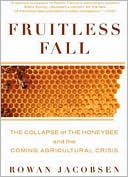Category Books
- Fiction Books & Literature
- Graphic Novels
- Horror
- Mystery & Crime
- Poetry
- Romance Books
- Science Fiction & Fantasy
- Thrillers
- Westerns
- Ages 0-2
- Ages 3-5
- Ages 6-8
- Ages 9-12
- Teens
- Children's Books
- African Americans
- Antiques & Collectibles
- Art, Architecture & Photography
- Bibles & Bible Studies
- Biography
- Business Books
- Christianity
- Computer Books & Technology Books
- Cookbooks, Food & Wine
- Crafts & Hobbies Books
- Education & Teaching
- Engineering
- Entertainment
- Foreign Languages
- Game Books
- Gay & Lesbian
- Health Books, Diet & Fitness Books
- History
- Home & Garden
- Humor Books
- Judaism & Judaica
- Law
- Medical Books
- New Age & Spirituality
- Nonfiction
- Parenting & Family
- Pets
- Philosophy
- Political Books & Current Events Books
- Psychology & Psychotherapy
- Reference
- Religion Books
- Science & Nature
- Self Improvement
- Sex & Relationships
- Social Sciences
- Sports & Adventure
- Study Guides & Test Prep
- Travel
- True Crime
- Weddings
- Women's Studies
Fruitless Fall: The Collapse of the Honey Bee and the Coming Agricultural Crisis »

Authors: Rowan Jacobsen
ISBN-13: 9781596916395, ISBN-10: 1596916397
Format: Paperback
Publisher: Bloomsbury USA
Date Published: August 2009
Edition: (Non-applicable)
Author Biography: Rowan Jacobsen
Rowan Jacobsen is the James Beard Award– winning author of A Geography of Oysters and Fruitless Fall. Jacobsen’s writings on food, the environment, and their interconnected nature have appeared in the New York Times, Wild Earth, Harper’s, Eating Well, and Newsweek. He lives in rural Vermont with his wife and son.
Book Synopsis
“Jacobsen reminds readers that bees provide not just the sweetness of honey, but also are a crucial link in the life cycle of our crops.”—Seattle Post-Intelligencer
Many people will remember that Rachel Carson predicted a silent spring, but she also warned of a fruitless fall, a time with no pollination and no fruit. The fruitless fall nearly became a reality when, in 2007, beekeepers watched thirty billion bees mysteriously die. And they continue to disappear. The remaining pollinators, essential to the cultivation of a third of American crops, are now trucked across the country and flown around the world, pushing them ever closer to collapse. Fruitless Fall does more than just highlight this growing agricultural catastrophe. It emphasizes the miracle of flowering plants and their pollination partners, and urges readers not to take the abundance of our Earth for granted. A new afterword by the author tracks the most recent developments in this ongoing crisis.
Publishers Weekly
With a passion that gives this exploration of colony collapse disorder real buzz, Jacobsen (A Geography of Oysters) investigates why 30 billion honeybees-one-quarter of the northern hemisphere's population-vanished by the spring of 2007. He identifies the convergence of culprits-blood-sucking mites, pesticide buildup, viral infections, overused antibiotics, urbanization and climate change-that have led to habitat loss and the destruction of "the beautiful mathematics of the hive." Honeybees are undergoing something akin to a nervous breakdown; they aren't pollinating crops as effectively, and production of commercial American honey, already undercut by cheap Chinese imports, is dwindling, even as beekeepers truck stressed honeybees cross-country to pollinate the fields of desperate farmers. Jacobsen pessimistically predicts that "our breakfasts will become... a lot more expensive" as the supply of citrus fruits, berries and nuts will inevitably decrease, though he expresses faith that more resilient bees can eventually emerge, perhaps as North American honeybees are crossbred with sturdier Russian queen bees. The author, now tending his own hives, invests solid investigative journalism with a poet's voice to craft a fact-heavy book that soars. (Sept.)
Copyright © Reed Business Information, a division of Reed Elsevier Inc. All rights reserved.Table of Contents
Chapter 1 Breakfast in America....................6
Chapter 2 How the Honey Bee Conquered the World....................22
Chapter 3 Collapse....................57
Chapter 4 Whodunit....................67
Chapter 5 Slow Poison....................84
Chapter 6 Florida, November 2007....................100
Chapter 7 The Almond Orgy....................123
Chapter 8 Bees on the Verge of a Nervous Breakdown....................137
Chapter 9 Resilience and the Russians....................154
Chapter 10 The Birth of Beauty....................184
Chapter 11 Fruitless Fall....................201
Epilogue: First Frost....................215
Appendix 1 The African Paradox....................218
Appendix 2 Keeping Bees....................228
Appendix 3 Cultivating a Pollinator Garden....................231
Appendix 4 The Healing Power of Honey....................245
Acknowledgments....................251
Sources....................253
Index....................265
Subjects
 Biology
Biology  Biology - Entomology
Biology - EntomologyScience & Nature
 Biology
Biology  Botany - Genetics & Reproduction
Botany - Genetics & ReproductionScience & Nature
 Nature
Nature  Arthropods - Insects - Bees
Arthropods - Insects - BeesScience & Nature
 Nature
Nature  Arthropods - Insects - General
Arthropods - Insects - GeneralScience & Nature
 All Science & Nature
All Science & Nature  Agricultural Sciences
Agricultural SciencesScience & Nature
 All Science & Nature
All Science & Nature  Biology & Life Sciences
Biology & Life SciencesScience & Nature
 All Science & Nature
All Science & Nature  Nature
NatureNonfiction
 Science & Nature
Science & Nature  Biology
BiologyNonfiction
 Science & Nature
Science & Nature  Nature
NatureNonfiction
 Science & Nature
Science & Nature  All Science & Nature
All Science & Nature
